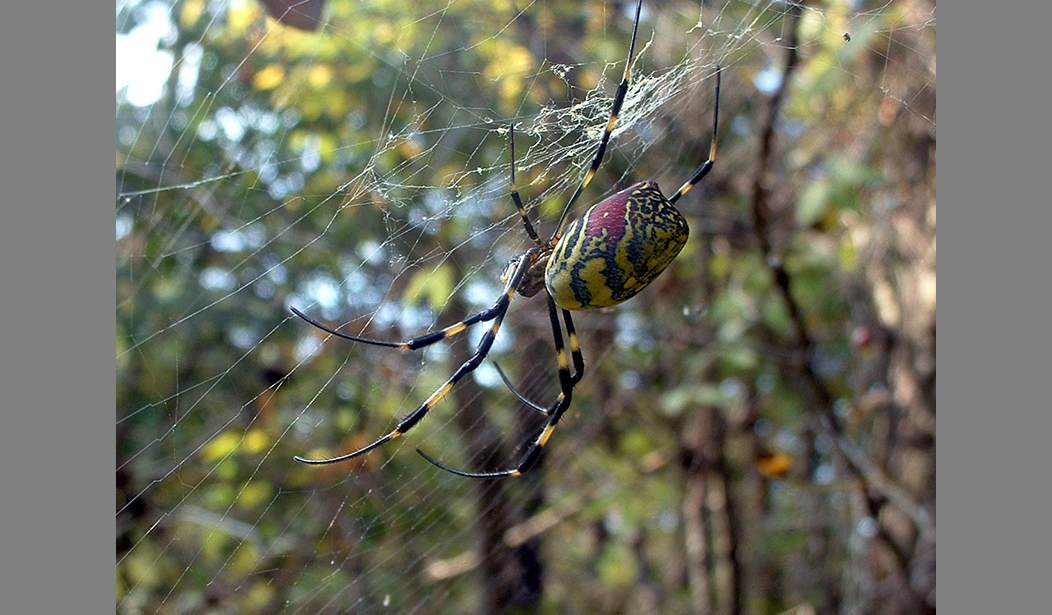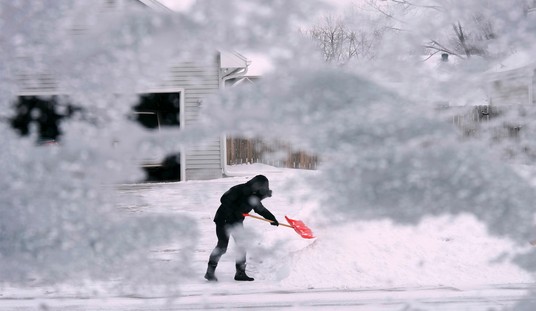OK, so it's not really as horrible as one might think. The Joro spider is native to eastern Asia, but they have been spreading in the eastern United States since at least 2014. They can (but usually don't) grow to a size where the span of their legs is the breadth of a human hand, and their young disperse by "ballooning," wherein a young spider lets out a long, long strand of fine silk, which catches the wind and carries the baby spider aloft.
This dispersal is now expected to take them into New York City.
It’s raining…giant spiders?!
Spiders that can float on the air and grow to the size of a human hand have been invading the US for more than a decade.
And now they could be touching down in New York — just in time for summer.
Trichonephila clavata – more commonly known as Joro spiders – are native to East Asia, and are known for spinning massive sticky webs.
They have recently been confirmed as far north in the US as Maryland, and new research suggests they will land in New York and New Jersey as early as this summer, according to Clemson University Professor David Coyle.
Here's the thing: These spiders are actually lovely creatures, brightly colored and fairly placid, and their webs are beautiful, especially on a sunny morning when they are still covered in dew. I've had the occasion to observe them in their native habitat in Japan and always enjoyed watching them. The Japanese people seem pretty protective of them, partly because of all the mosquitoes and other pesky bugs they eat, and partly because of that innate Japanese ability to find and appreciate beauty in their surroundings.
They present no threat to humans.
While Joro spiders are also pretty docile and aren’t a danger humans, New Yorkers should be on the lookout for their webs, which can stretch across multiple feet.
“They like more open areas, where things fly into their web,” Coyle said, noting that they are often found between power lines, or on the edge of natural areas.
They tend to prey on some of the region’s pesky insects, including mosquitos and biting flies.
Downside: Joro spiders do prey on smaller spider species, so some of the eastern seaboards' native spider species may be troubled by the big Asian imports.
See Related: Relax: There Are No Spiders From Mars
Food Writer Cuts Her Grocery Bill in Half by Feeding Her Baby Crickets
At least they don't build spider walls, as was documented recently by a tourist in Bali.
Grace Kelly, 33, filmed hundreds of spiders hanging in webs in a scene that could be mistaken for a Halloween display on the side of a remote road when traveling between Ubud and Mount Batur, just on the border of Kintamani.
“I glimpsed at it as we drove past and gasped and asked the driver to turn around because I couldn’t believe what I’d seen,” the British traveler told news.com.au.
What New York is getting out of this Asian invasion is probably trouble for the native spiders, and that's too bad. But nothing comes without a tradeoff. Joro spiders are here now, they are likely here to stay, and aside from those suffering from a bad case of arachnophobia, most people can learn to appreciate them. They are big, they are pretty, their webs are normally in open areas outdoors, and they are likewise beautiful. The spiders are no threat to humans, and they will eat lots of pesky mosquitoes, flies, and other bugs.
So New Yorkers shouldn't start shouting, "Kill it with fire!" and running for the flamethrowers. After all that New York City has suffered at the hands of its elected officials over the last few years, how much harm can some big flying spiders do?














Join the conversation as a VIP Member